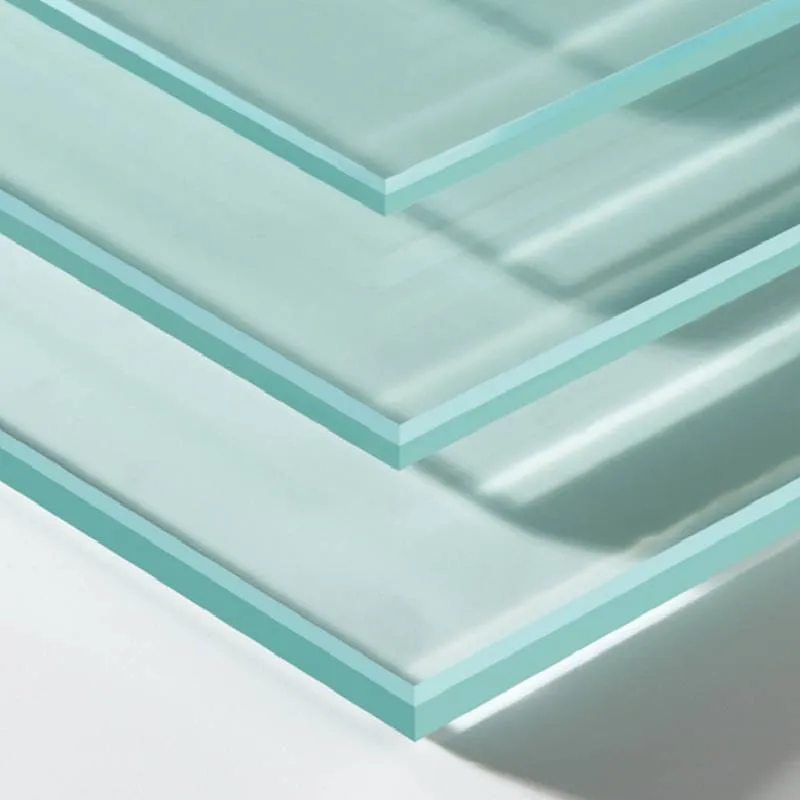The Importance of Low Iron Glass and Its Suppliers in Modern Applications
In recent years, low iron glass has gained significant attention across various industries due to its unique properties and advantages. Distinct from traditional glass, low iron glass contains a reduced amount of iron oxide, which enhances its clarity and light transmission. This type of glass is particularly prized for applications that demand high levels of transparency and aesthetic appeal, such as architecture, automotive, and solar energy technologies.
Understanding Low Iron Glass
Low iron glass, often referred to as clear or ultra-clear glass, is engineered to minimize the green tint commonly associated with regular glass. This is accomplished by reducing the iron content during the manufacturing process. As a result, low iron glass boasts a light transmittance of up to 91%, allowing more natural light to permeate through it, making spaces feel more open and inviting.
The optical clarity of low iron glass is not merely a cosmetic benefit; it significantly impacts a variety of applications. In architectural design, for instance, buildings featuring large glass facades benefit from low iron glass, as it provides unobstructed views and enhances energy efficiency through improved daylighting. Similarly, in the solar industry, low iron glass is widely used in photovoltaic panels due to its superior light transmission properties, maximizing the energy harvested from sunlight.
Key Applications
1. Architecture and Interior Design Low iron glass is revolutionizing modern architecture. It allows architects to create stunning facades and stunning interior designs that enhance both aesthetics and functionality. High-end residential interiors often feature low iron glass in shower enclosures, railing systems, and window installations.
low iron glass suppliers
2. Automotive Industry The automotive industry recognizes the benefits of low iron glass for windshields and windows, where clarity and safety are paramount. Vehicles equipped with low iron glass provide drivers with a clearer view, enhancing safety and driving experience.
3. Solar Energy The renewable energy sector relies heavily on low iron glass for solar panels, as its high transparency encourages maximum sunlight absorption. This efficiency is critical for reducing the cost-per-watt and improving the overall performance of solar installations.
Choosing the Right Supplier
When seeking low iron glass suppliers, it’s essential to consider several factors to ensure quality and reliability. Look for suppliers with a proven track record and certifications that guarantee their products meet industry standards. Additionally, suppliers should have the capability to handle custom orders, providing tailored solutions to meet specific project requirements.
Online research, industry trade shows, and word-of-mouth referrals can be effective ways to identify reputable suppliers. Engaging with suppliers who prioritize innovation and sustainability can also be beneficial, as the demand for environmentally friendly materials continues to rise.
Conclusion
As industries increasingly prioritize sustainability and aesthetic appeal, the role of low iron glass and its suppliers becomes more critical. With its unmatched clarity and versatility, low iron glass is set to dominate various sectors, from architecture to renewable energy. By choosing reputable suppliers, businesses can ensure they are using high-quality materials that not only meet but exceed their operational needs, paving the way for innovative and environmentally conscious solutions in the modern world.
 Afrikaans
Afrikaans  Albanian
Albanian  Amharic
Amharic  Arabic
Arabic  Armenian
Armenian  Azerbaijani
Azerbaijani  Basque
Basque  Belarusian
Belarusian  Bengali
Bengali  Bosnian
Bosnian  Bulgarian
Bulgarian  Catalan
Catalan  Cebuano
Cebuano  Corsican
Corsican  Croatian
Croatian  Czech
Czech  Danish
Danish  Dutch
Dutch  English
English  Esperanto
Esperanto  Estonian
Estonian  Finnish
Finnish  French
French  Frisian
Frisian  Galician
Galician  Georgian
Georgian  German
German  Greek
Greek  Gujarati
Gujarati  Haitian Creole
Haitian Creole  hausa
hausa  hawaiian
hawaiian  Hebrew
Hebrew  Hindi
Hindi  Miao
Miao  Hungarian
Hungarian  Icelandic
Icelandic  igbo
igbo  Indonesian
Indonesian  irish
irish  Italian
Italian  Japanese
Japanese  Javanese
Javanese  Kannada
Kannada  kazakh
kazakh  Khmer
Khmer  Rwandese
Rwandese  Korean
Korean  Kurdish
Kurdish  Kyrgyz
Kyrgyz  Lao
Lao  Latin
Latin  Latvian
Latvian  Lithuanian
Lithuanian  Luxembourgish
Luxembourgish  Macedonian
Macedonian  Malgashi
Malgashi  Malay
Malay  Malayalam
Malayalam  Maltese
Maltese  Maori
Maori  Marathi
Marathi  Mongolian
Mongolian  Myanmar
Myanmar  Nepali
Nepali  Norwegian
Norwegian  Norwegian
Norwegian  Occitan
Occitan  Pashto
Pashto  Persian
Persian  Polish
Polish  Portuguese
Portuguese  Punjabi
Punjabi  Romanian
Romanian  Russian
Russian  Samoan
Samoan  Scottish Gaelic
Scottish Gaelic  Serbian
Serbian  Sesotho
Sesotho  Shona
Shona  Sindhi
Sindhi  Sinhala
Sinhala  Slovak
Slovak  Slovenian
Slovenian  Somali
Somali  Spanish
Spanish  Sundanese
Sundanese  Swahili
Swahili  Swedish
Swedish  Tagalog
Tagalog  Tajik
Tajik  Tamil
Tamil  Tatar
Tatar  Telugu
Telugu  Thai
Thai  Turkish
Turkish  Turkmen
Turkmen  Ukrainian
Ukrainian  Urdu
Urdu  Uighur
Uighur  Uzbek
Uzbek  Vietnamese
Vietnamese  Welsh
Welsh  Bantu
Bantu  Yiddish
Yiddish  Yoruba
Yoruba  Zulu
Zulu 

